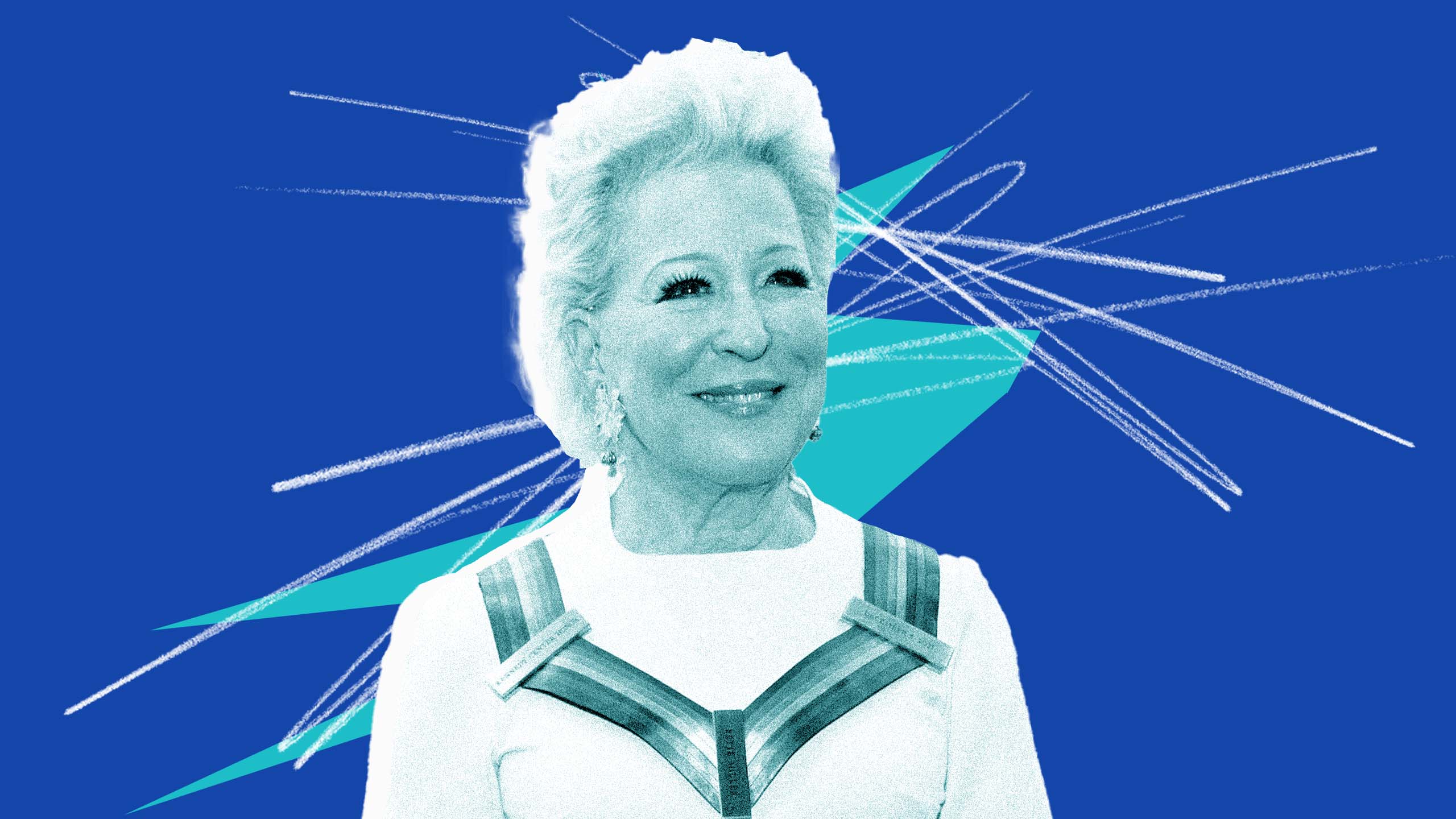By now there’s a familiar routine: A beloved celebrity—often known for their feminism or queer allyship—shares blatant transphobia on social media. They’re called out for it by their adoring fans. They point to a [insert legacy media publication here] article that “raised some really interesting points” and say that really they’re worried about women’s rights and don’t mean to offend anyone, so why is everyone coming for them?
The latest example came last week when theatre and film icon Bette Midler shared a tweet criticizing the use of inclusive language around abortion rights.
Midler’s tweet repeated several key phrases and direct talking points from a New York Times piece written by Pamela Paul, which dug up the whole “we can’t say woman anymore” argument in relation to the fall of Roe v. Wade in the U.S.—and was rightfully slammed for its obvious transphobia and factual inaccuracies.
If this sounds familiar, it’s because it is:last Fall, Canadian author Margaret Atwood faced similar criticism after sharing anti-trans messaging published by the CBC and Toronto Star.
It could be easy to dismiss these takes as misunderstood ramblings from older women who mean well but got it wrong. After all, Midler is a longtime gay ally and diva icon to many in the LGBTQ2S+ community. But her casual transphobia is the latest example of the years-long campaign by anti-trans groups to pit cis women against the LGBTQ2S+ community, and how those messages are embedding themselves into public discourse.
It’s vital to address this effort to wedge a divide between cis women and trans folks for what it is and keep talking about it and the role that publications like the New York Times play in normalizing this dichotomy and bringing people like Midler—and our grandparents, friends and other loved ones—into the fold.
How did we get here?
For years, anti-trans activists have pitted cis women and LGB folks against each other, and mainstream media and academia have normalized that dichotomy. The idea that women’s rights and trans rights are at odds has somehow become a regular and acceptable thing to think and publish in the pages of the world’s most powerful publications.
When fans rightfully pointed out the anti-trans sentiments in Midler’s tweet, she doubled down and explicitly cited Paul’s Times article as the source behind her opinion.
“I’ve fought for marginalized people for as long as I can remember. Still, if you want to dismiss my 60 years of proven love and concern over a tweet that accidentally angered the very people … I have always supported and adored, so be it,” Midler wrote in a series of follow-up tweets, citing her early work performing in gay bathhouses in 1960s. “But the truth is, Democracy is slipping through our fingers! I’m all in on trying to save Democracy for ALL PEOPLE. We must unite, because, in case you haven’t been paying attention, divided we will definitely fall.”
Beyond that statement reading as the ultimate example of “but I have gay friends!,” what is being argued is doing the opposite of “uniting all people.” Suggesting that cis women are threatened by trans inclusion is explicitly intended to divide and posit trans people and women as separate entities whose rights are in competition with each other, rather than a group of marginalized people negatively impacted by the cisnormative heterosexual patriarchy, and whose identities often overlap.
In the New York Times piece, Paul (like, frankly, too many before her) suggests that trans folks’ and allies’ ask to be included in conversations around reproductive rights is a threat to the very concept of womanhood itself.
“Previously a commonly understood term for half the world’s population, the word [women] had a specific meaning tied to genetics, biology, history, politics and culture,” Paul writes. “No longer. In its place are unwieldy terms like ‘pregnant people,’ ‘menstruators’ and ‘bodies with vaginas.’”
It’s an argument we’ve heard before. These articles (and there have been many of them) construct a fictional trans person boogeythem, who is busting down the door or lurking under the bed of every abortion conversation with the ominous words of “birthing people” and “uterus-havers” and aggressively shushing anyone who dares to say “woman.”
Of course, the reality is actually those of us anatomically capable of birth who aren’t women are simply asking to be addressed as who we are when talking about medical care. I’ve never met a trans person who wants anyone to stop using the word woman, just as there’s no tangible proof that feminism was set back by someone saying “pregnant people” once. Frankly, most trans folks don’t love being reduced to our anatomy with the whole “womb-haver” thing anyway—“people who get abortions” works just fine, and the Trans Journalists Association’s official style guide agrees. We’re all just asking to use terms that include us, and that shouldn’t be a point of contention, as the comedian Mae Martin wrote last week in response to Midler.
And yet, the question of whether trans people should have basic rights continues to be posed again and again—in alarming frequency—in the pages of trusted legacy media sources like the New York Times. For a lot of readers, fringe beliefs won’t stick when you read them on some random blog—but in a paper of record, they’re given weight and meaning and importance they wouldn’t otherwise have. The choice to publish that Paul article and distribute it to the eager minds of people like Midler was conscious on the part of the Times, and it can and will have resounding impacts on peoples’ lives, just as the paper’s transphobic coverage has before.
The puppet masters behind it all
This normalization in legacy media is largely a result of coordinated efforts from groups like Hands Across the Aisle and the Women’s Liberation Front in the U.S. and the LGB Alliance in the U.K. These groups have worked to embed anti-trans narratives in legislation and media in the U.S and U.K. for over a decade and widen the imaginary chasm dividing the similar experiences of cis women and trans folks.
In a 2019 explainer for Vox, writer Kaitlyn Burns describes how these groups have historically partnered with conservative legislators to draft anti-trans legislation and promote anti-trans agendas, particularly regarding trans women. These groups set up a false dichotomy with “women” on one side and “trans people” on the other, without ever acknowledging the shared struggles both groups face, let alone the fact that trans women face even greater challenges in many shared contexts including healthcare and public safety.
“Most of their ideas—like that trans women are a threat to cisgender women’s safety—are based on cherry-picked cases of horrific behaviour by a small number of trans people. Above all else, their ideology doesn’t allow for trans people to have self-definition or any autonomy over their gender expression,” Burns writes.
This forced divide has repeatedly popped up in discussions around trans peoples’ participation in sports, bathrooms, children’s education and abortion, and has reared its head again with the fall of Roe v. Wade. These groups meticulously drive a wedge into each of these issues, using media narratives and legislation—often draft legislation shared from state to state—to push trans people out, and enforce the belief that there are two sides that shall never meet. If those of us in North America want to see an example of where the discourse is headed, we only have to look across the pond to the U.K. and its hotbed of anti-trans so-called feminism, where media and anti-trans groups have made trans people the punching bag.
That brings us back to Bette Midler and the New York Times. It’s obvious that Midler cares about women’s rights. But the proliferation of this hateful rhetoric has convinced her that when it comes to abortion, trans peoples’ basic ask to be included as people impacted by threats to abortion access is a threat to that—and that she needs to share that concern with her millions of fans.
That’s a problem. And while Bette Midler is just one person and that Times piece is just one piece, we need to start calling these things out and demanding that publications don’t let it slide and don’t let these dangerous and inaccurate takes make their way onto their pages.
Because even if something is as inaccurate, misplaced and maliciously intended as that Paul article, as soon as it’s in the Times, it’s on the record. And that’s one step further in widening a rift between the cis feminists like Midler who believe it, and the trans people who desperately need allies in this fraught moment.


 Why you can trust Xtra
Why you can trust Xtra


